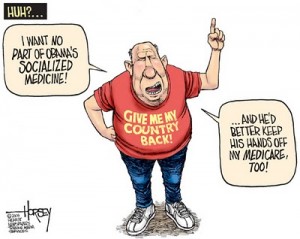The World Health Organization holds the ideal of a right to health, which includes the right to, “ access to timely, acceptable, and affordable health care of appropriate quality”( WHO: http://www.who.int/mediacentre/factsheets/fs323/en/). Here, the right to access extends to those with normal means and ability as well as those with defecates physical, economic, transportation, or informational resources. The United Nations document on the right to health also presents a similar view (UN: http://www.ohchr.org/Documents/Publications/Factsheet31.pdf). Also, both of these organizations, which lead the front in setting the standards of human dignity and rights, call for the access to resources such as sanitation, nutrition, and clean water, which form the underlying basis of health.
I believe that these idealistic, though not impossible, definitions of a right to health reflect Beauchamp and Childress’s egalitarian theories of justice. Also, they are reminiscent of John Rawl’s theory of justice that is applied to the right to health. It calls for the access by all members of society to, “an adequate, although not maximal, level of health care- the exact level of access being contingent on available social resources and public processes of decision making (Beauchamp 248). It is of note, also, that thought the WHO and UN have clauses which define a human right to health, no document of the United States of America calls for such a right.
Clearly, such lofty ideals are hard to meet within the constraints of social and economic reality. For example, Great Britain’s National Health Service is often highlighted as an equal and just form of health distribution. However, it does not respect the right to timely access since it discourages, “treatment sought on an elective basis through long queues,” and even more morally questionably, discourages the use of resources by those with more futile conditions (Brody). I believe that the National Health Service relies on the Utilitarian Theory of Justice in order to, “distribute justice as one among several problems of maximizing values.” (254 Beauchamp). Such a theory, however, is not compatible with the WHO and UN’s definition of a right to health. The National Health Service preserves justice by ensuring social welfare but does not ensure beneficence and non-malfeasance for all members of society since it discourages some elective surgeries that potential improve quality of life and has created a system of queues in order to discourage the pursuit of elective procedures.
Germany’s health care system does seem to embrace the egalitarian ideals that the WHO and UN hold since it’s, “comprehensive health-care system .. over 99% of the population is covered”(Brody). It ensures that almost every citizen has access to healthcare, thought not the maximal amount. This is how the German system institutes the utility theory of justice. It has three classes of care. Each one differs, however, mostly in only the setting of the care but not in the quality. For example, first class care provides a private room while in third class care, patients are in a general ward. Thus, all receive adequate care though perhaps not in the same type of setting. I think this model is a wonderful combination of the WHO and UN calls for universal care that also takes into account the utilitarian requirements of affordability and resource management. Currently, the United States is trying to achieve coverage of all its citizens. I think we, as a nation, would do well to see how other countries, such as Germany, are managing to balance different theories of justice to provide adequate care for all. Then, we too can be in accordance with the UN and WHO’s calls to respect all humans’ right to health.
http://www.who.int/mediacentre/factsheets/fs323/en/
http://www.ohchr.org/Documents/Publications/Factsheet31.pdf
Beauchamp, Tom L, and James F. Childress. Principles of Biomedical Ethics. New York: Oxford University Press, 2009. Print
RD B. Brody and T. Engelhard, “Access to Health Care,” Bioethics: Readings and Cases
 that he works for does not provide health insurance benefits.
that he works for does not provide health insurance benefits. he husband is beginning to show symptoms of Alzheimer’s disease, and is in need of additional nursing care. The couple cannot afford to both keep their house and to send the husband to a nursing home. A lawyer tells the wife that the best financial and legal option is to divorce the husband and claim all assets. Once completed, the husband would comply with Medicaid guidelines.
he husband is beginning to show symptoms of Alzheimer’s disease, and is in need of additional nursing care. The couple cannot afford to both keep their house and to send the husband to a nursing home. A lawyer tells the wife that the best financial and legal option is to divorce the husband and claim all assets. Once completed, the husband would comply with Medicaid guidelines.

